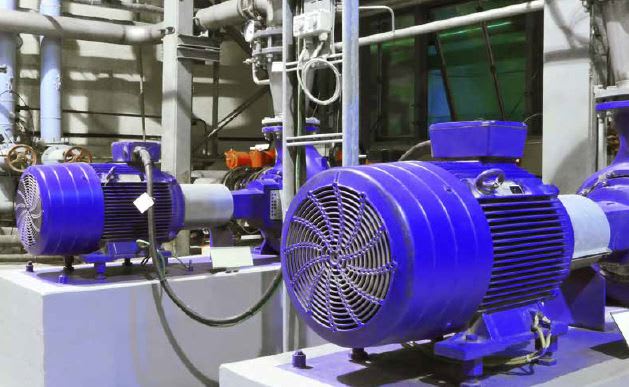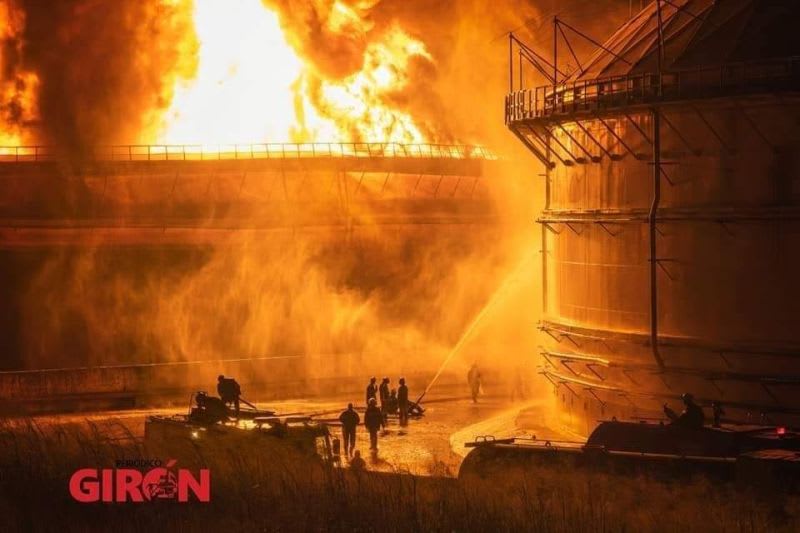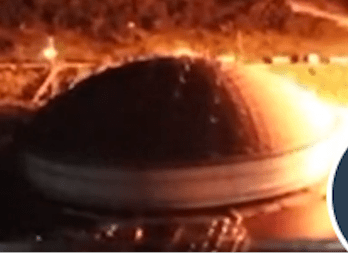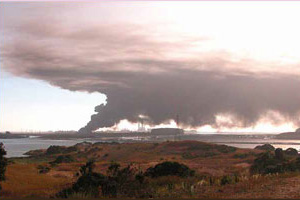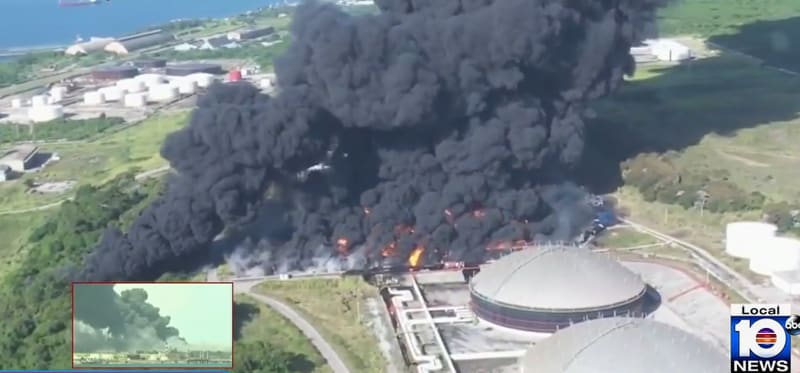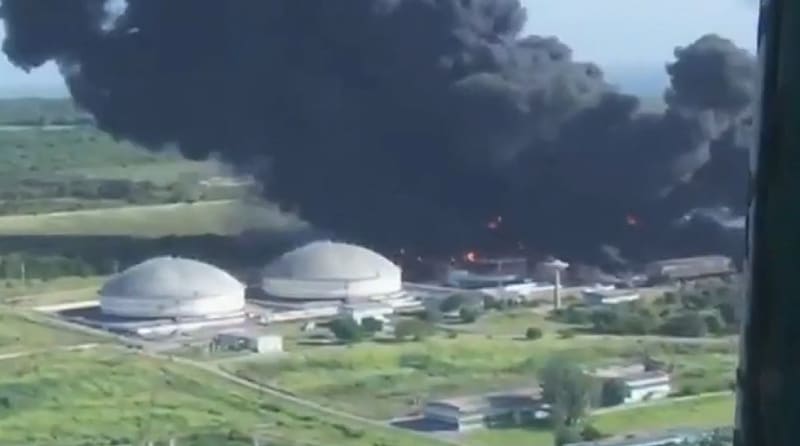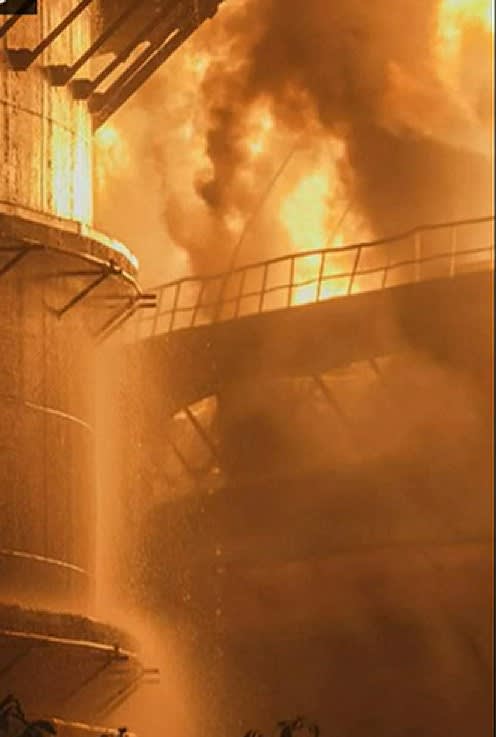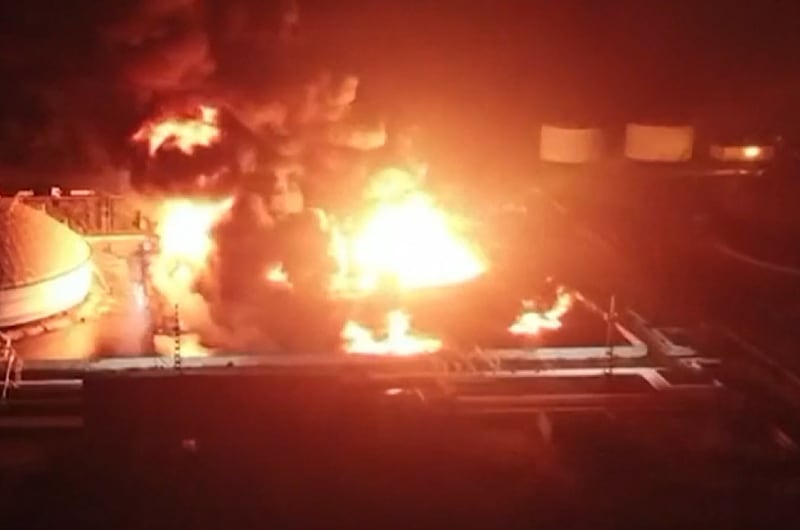MJCronin
Mechanical
- Apr 9, 2001
- 5,097
Can we talk about BLEVE, ????
A BLEVE is a Boiling liquid expanding vapor explosion a deadly and unpredicatble element in some storage tank fires.
Wikipedia tells us: (
A boiling liquid expanding vapor explosion ... is an explosion caused by the rupture of a vessel containing a pressurized liquid that has reached temperature above its boiling point. Because the boiling point of a liquid rises with pressure, the contents of the pressurized vessel can remain liquid as long as the vessel is intact. If the vessel's integrity is compromised, the loss of pressure and dropping boiling point can cause the liquid to rapidly convert to a gas and expand rapidly. If the gas is combustible, as is the case with hydrocarbons and alcohols, further damage can be caused by an ensuing fire.
Can we talk about the crucial importance of NEC compliant tank grounding systems ?
.... and finally, can we talk about the MASSIVE COSTS for this particular accident, with today's expensive oil ?
MJCronin
Sr. Process Engineer
A BLEVE is a Boiling liquid expanding vapor explosion a deadly and unpredicatble element in some storage tank fires.
Wikipedia tells us: (
A boiling liquid expanding vapor explosion ... is an explosion caused by the rupture of a vessel containing a pressurized liquid that has reached temperature above its boiling point. Because the boiling point of a liquid rises with pressure, the contents of the pressurized vessel can remain liquid as long as the vessel is intact. If the vessel's integrity is compromised, the loss of pressure and dropping boiling point can cause the liquid to rapidly convert to a gas and expand rapidly. If the gas is combustible, as is the case with hydrocarbons and alcohols, further damage can be caused by an ensuing fire.
Can we talk about the crucial importance of NEC compliant tank grounding systems ?
.... and finally, can we talk about the MASSIVE COSTS for this particular accident, with today's expensive oil ?
MJCronin
Sr. Process Engineer




